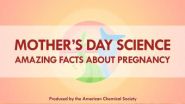(Press-News.org) MANHATTAN, Kan. — A collaborative discovery involving Kansas State University researchers may lead to the first universal treatment for dystonia, a neurological disorder that affects nearly half a million Americans.
Michal Zolkiewski, associate professor of biochemistry and molecular biophysics at Kansas State University, and Jeffrey Brodsky at the University at Pittsburgh co-led a study that focused on a mutated protein associated with early onset torsion dystonia, or EOTD, the most severe type of dystonia that typically affects adolescents before the age of 20. Dystonia causes involuntary and sustained muscle contractions that can lead to paralysis and abnormal postures.
"It's a painful and debilitating disease for which there is no cure or treatment that would be effective for all patients," Zolkiewski said. "There are some treatments that are being tested, but nothing is really available to those patients that would cure the symptoms completely."
In addition to Zolkiewski and Brodsky, researchers involved in the study included Hui-Chuan Wu, Kansas State University doctoral student in biochemistry and molecular biophysics, Taiwan, and colleagues at the University of Texas Southwestern Medical Center and the University of Adelaide in Australia.
The Journal of Biological Chemistry recently published the team's study, "The BiP molecular chaperone plays multiple roles during the biogenesis of TorsinA, a AAA+ ATPase associated with the neurological disease Early-Onset Torsion Dystonia." The study was funded by the Dystonia Medical Research Foundation.
Researchers built the study on a decade-old discovery that patients with early onset torsion dystonia typically have a mutated gene that encodes the protein TorsionA.
"TorsinA is a protein that all people have in their bodies," Zolkiewski said. "It appears to perform an important role in the nervous system, but currently nobody knows what that role is. There also is no understanding of the link between the mutation and dystonia."
In order to study protein expression in a living organism, researchers used yeast — one of the simplest living systems. The yeast was engineered to produce the human protein TorsionA.
Observations revealed that a second protein named BiP — pronounced "dip" — helps process the TorsinA protein and maintain its active form. Additionally, researchers found that BiP also guides TorsinA to being destroyed by cells if the protein is defective. Humans carry the BiP protein as well as the TorsinA protein.
"BiP is a molecular chaperone that assists other proteins in maintaining their function," Zolkiewski said. "In this study we found that BiP really has a dual role. On one hand it's helping TorsinA and on the other it's leading to its degradation."
Future studies may focus on BiP as a target for treating dystonia, as modulating BiP in human cells would affect TorsinA, Zolkiewski said.
"Because we don't know what exactly the function of TorsinA is, we may not be able to design a treatment based on that protein," Zolkiewski said. "We know what BiP does, however. It is a pretty well-studied chaperone, which makes it much easier to work with."
INFORMATION: END
Scientists identify new protein in the neurological disorder dystonia
Potential for treatments anticipated
2014-05-06
ELSE PRESS RELEASES FROM THIS DATE:
International team maps nearly 200,000 global glaciers in quest for sea rise answers
2014-05-06
An international team led by glaciologists from the University of Colorado Boulder and Trent University in Ontario, Canada has completed the first mapping of virtually all of the world's glaciers -- including their locations and sizes -- allowing for calculations of their volumes and ongoing contributions to global sea rise as the world warms.
The team mapped and catalogued some 198,000 glaciers around the world as part of the massive Randolph Glacier Inventory, or RGI, to better understand rising seas over the coming decades as anthropogenic greenhouse gases heat the ...
GW researcher looks 'inside the box' for a sustainable solution for intestinal parasites
2014-05-06
WASHINGTON (May 6, 2014) — According to the World Health Organization, more than 450 million people worldwide, primarily children and pregnant women, suffer illness from soil-transmitted helminths (STH), intestinal parasites that live in humans and other animals. Considerable effort and resources have been, and continue to be, spent on top-down, medical-based programs focused on administering drugs to control STH infections, with little success. John Hawdon, Ph.D., associate professor of microbiology, immunology, and tropical medicine at the George Washington University ...
Substantial improvements made in EPA's IRIS Program, report says
2014-05-06
WASHINGTON – A new congressionally mandated report from the National Research Council says that changes EPA has proposed and implemented into its Integrated Risk Information System (IRIS) process are "substantial improvements." While acknowledging the progress made to date, the report offers further guidance and recommendations to improve the overall scientific and technical performance of the program, which is used to assess the hazards posed by environmental contaminants.
In 2011, a Research Council committee reviewed EPA's IRIS assessment for formaldehyde and found ...
More support needed for teaching swimming in schools
2014-05-06
Britain could become a nation of non-swimmers if drastic changes aren't made to ensure all young people have access to adequate lessons and facilities, according to academics at the University of East Anglia (UEA).
Dr Craig Avieson and Dr Penny Lamb, of UEA's School of Education and Lifelong Learning, warn swimming provisions are falling to secondary physical education (PE) teachers, with 51 per cent of British children aged 7-11 unable to swim 25 metres. Children should be able to swim at least that length by the time they leave primary school, under curriculum requirements ...
Are we ready for contact with extraterrestrial intelligence?
2014-05-06
The SETI project scientists are known for tracking possible extraterrestrial signals, but now they are also considering sending messages from Earth telling of our position. A researcher from the University of Cádiz (Spain) questions this idea in view of the results from a survey taken by students, revealing the general level of ignorance about the cosmos and the influence of religion when tackling these matters.
The Search for ExtraTerrestrial Intelligence (SETI) project is an initiative that began in the 70s with funding from NASA, but that has evolved towards the collaboration ...
Mother's Day science: Reactions highlights amazing facts about pregnancy -- video
2014-05-06
WASHINGTON, May 6, 2014 — Pregnant women go through a lot to bring a baby into this world: 2 a.m. food cravings, hypersensitivity to certain smells and morning sickness, not to mention labor and delivery. In honor of Mother's Day, the American Chemical Society's (ACS') newest Reactions video highlights the chemistry behind a pregnant woman's altered sense of taste and smell, how mom's diet influences baby's favorite foods and other pregnancy phenomena. The video is available at http://youtu.be/Gnqjh-L4e9g
And because moms always deserve more, we've created a bonus video ...
State of the nation's egotism: On the rise for a century
2014-05-06
ANN ARBOR—Forget the "me" generation. A new analysis of long-term trends in egotism shows there's been a "me" century in America.
The analysis, conducted by researchers at the University of Michigan, shows that characteristics related to self-interest, compared to interest in the lives and needs of other people, was low during the 19th century but rose steadily after the turn of the 20th century.
"We found that self-interest tends to peak after economic booms," said William Chopik, a doctoral candidate in psychology at U-M and first author of the paper just published ...
Snacking contributes to fatty liver and abdominal obesity
2014-05-06
Researchers from The Netherlands found that snacking on high-fat and high-sugar foods was independently associated with abdominal fat and fatty liver (hepatic steatosis). According to the study published in Hepatology, a journal of the American Association for the Study of Liver Diseases, hypercaloric diet with frequent meals increases intrahepatic triglyceride content (IHTG) and fat around the waist, but increasing meal size did not.
Obesity is a global health concern with the World Health Organization reporting that more than 200 million men and close to 300 million ...
Scientists challenge FIFA: Save the 3-banded armadillo
2014-05-06
New research in Biotropica asks FIFA to follow through with its environmental claims. The 2014 FIFA (Fédération Internationale de Football Association) World Cup will be played in Brazil. Its "Football for the Planet" program aims to monitor greenhouse gasses, provide environmentally friendly stadiums, and better waste management. However, FIFA has not maximized this opportunity. In an article published in the upcoming issue, researchers challenge the role that FIFA and the Brazilian government play in protecting the environment, asking both to: protect 1,000 hectares ...
Mobile health apps lack behavior-change techniques
2014-05-06
Behavior-change techniques are not well represented in the marketing materials for top-rated physical-activity apps, according to a team of Penn State researchers.
They also found that two types of physical-activity apps are available on the market -- those that focus on educating users on how to perform different exercises and those that focus on supporting users' motivation for physical activity.
"The app marketplace is largely unregulated and users make decisions based on developers' descriptions of apps," said David Conroy, professor of kinesiology. "Our results ...
LAST 30 PRESS RELEASES:
Tracing the quick synthesis of an industrially important catalyst
New software sheds light on cancer’s hidden genetic networks
UT Health San Antonio awarded $3 million in CPRIT grants to bolster cancer research and prevention efforts in South Texas
Third symposium spotlights global challenge of new contaminants in China’s fight against pollution
From straw to soil harmony: International team reveals how biochar supercharges carbon-smart farming
Myeloma: How AI is redrawing the map of cancer care
Manhattan E. Charurat, Ph.D., MHS invested as the Homer and Martha Gudelsky Distinguished Professor in Medicine at the University of Maryland School of Medicine
Insilico Medicine’s Pharma.AI Q4 Winter Launch Recap: Revolutionizing drug discovery with cutting-edge AI innovations, accelerating the path to pharmaceutical superintelligence
Nanoplastics have diet-dependent impacts on digestive system health
Brain neuron death occurs throughout life and increases with age, a natural human protein drug may halt neuron death in Alzheimer’s disease
SPIE and CLP announce the recipients of the 2025 Advanced Photonics Young Innovator Award
Lessons from the Caldor Fire’s Christmas Valley ‘Miracle’
Ant societies rose by trading individual protection for collective power
Research reveals how ancient viral DNA shapes early embryonic development
A molecular gatekeeper that controls protein synthesis
New ‘cloaking device’ concept to shield sensitive tech from magnetic fields
Researchers show impact of mountain building and climate change on alpine biodiversity
Study models the transition from Neanderthals to modern humans in Europe
University of Phoenix College of Doctoral Studies releases white paper on AI-driven skilling to reduce burnout and restore worker autonomy
AIs fail at the game of visual “telephone”
The levers for a sustainable food system
Potential changes in US homelessness by ending federal support for housing first programs
Vulnerability of large language models to prompt injection when providing medical advice
Researchers develop new system for high-energy-density, long-life, multi-electron transfer bromine-based flow batteries
Ending federal support for housing first programs could increase U.S. homelessness by 5% in one year, new JAMA study finds
New research uncovers molecular ‘safety switch’ shielding cancers from immune attack
Bacteria resisting viral infection can still sink carbon to ocean floor
Younger biological age may increase depression risk in older women during COVID-19
Bharat Innovates 2026 National Basecamp Showcases India’s Most Promising Deep-Tech Ventures
Here’s what determines whether your income level rises or falls
[Press-News.org] Scientists identify new protein in the neurological disorder dystoniaPotential for treatments anticipated


